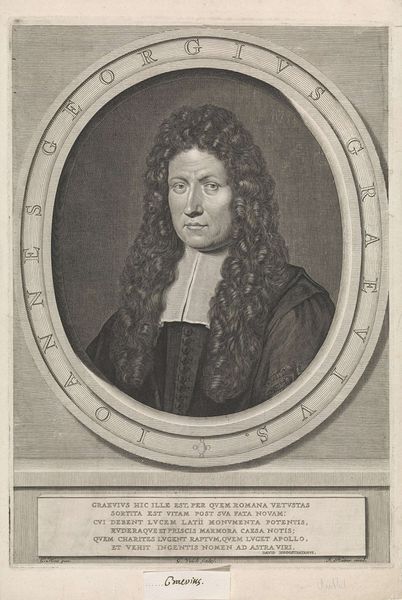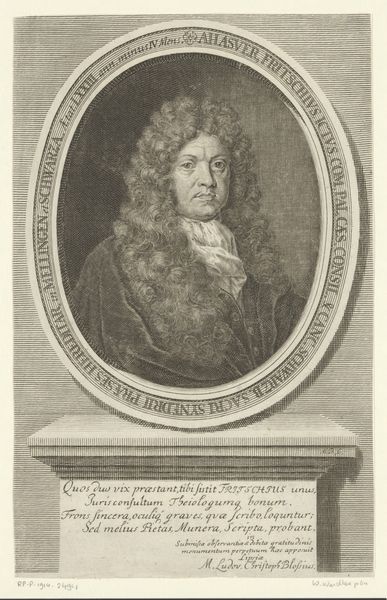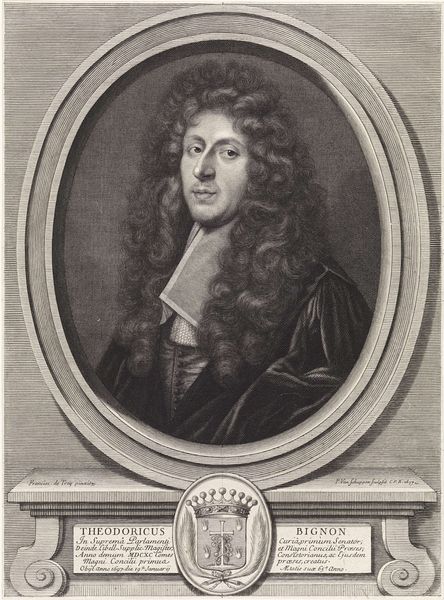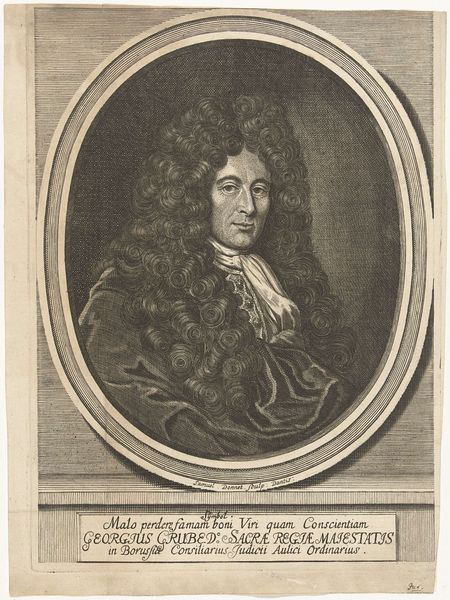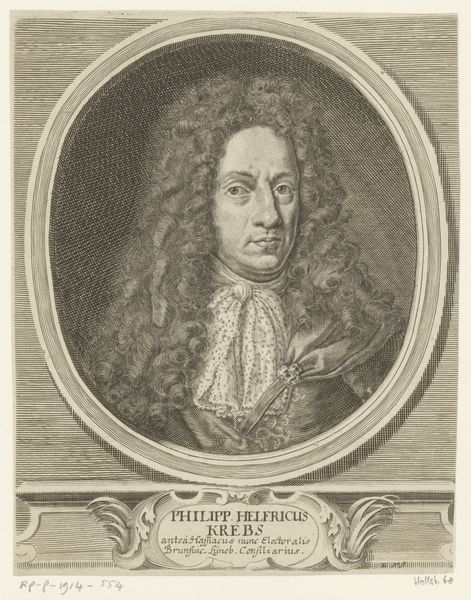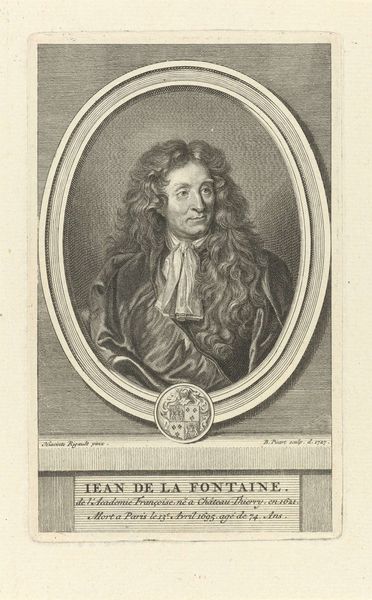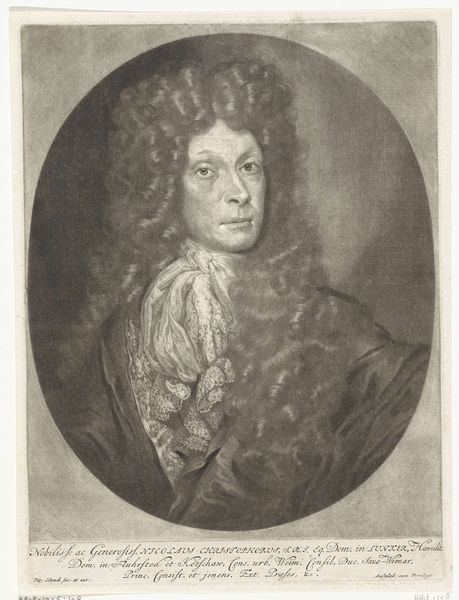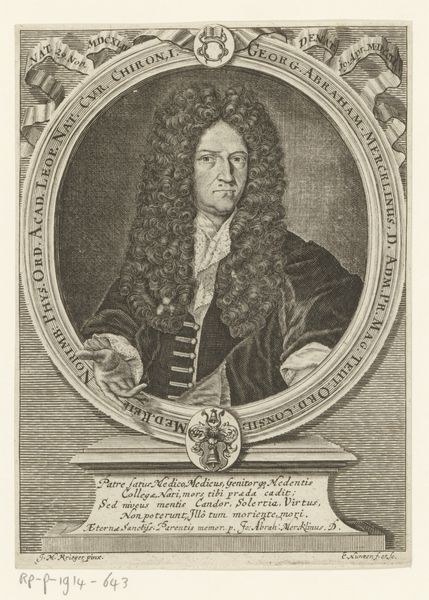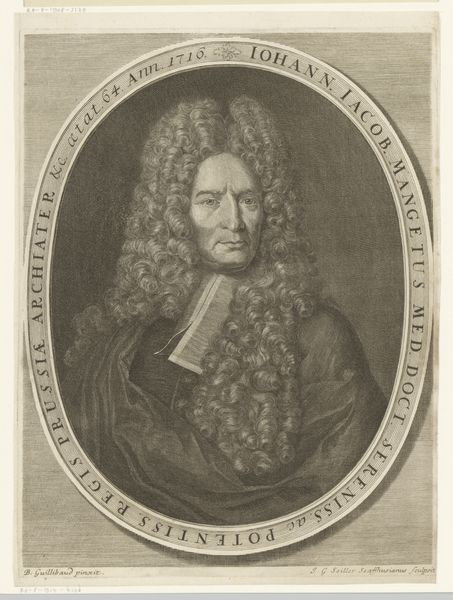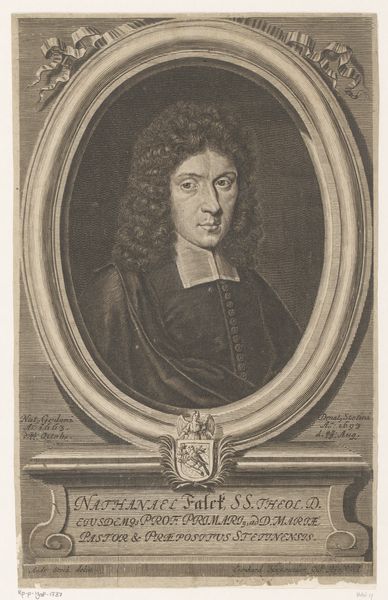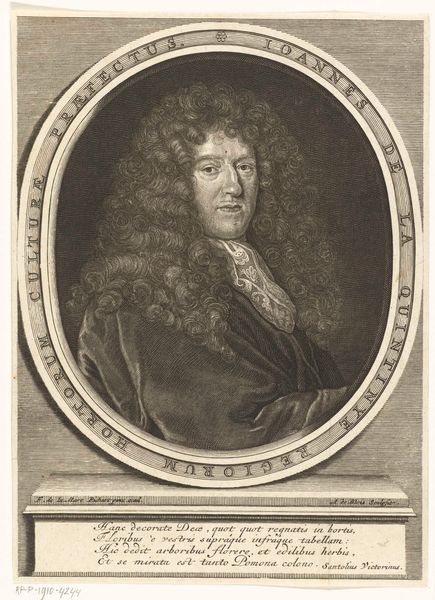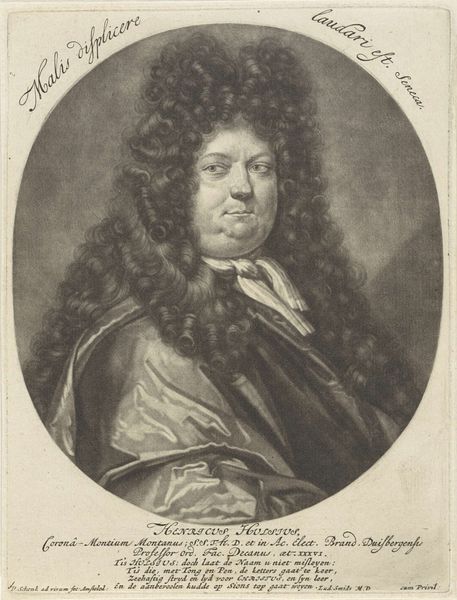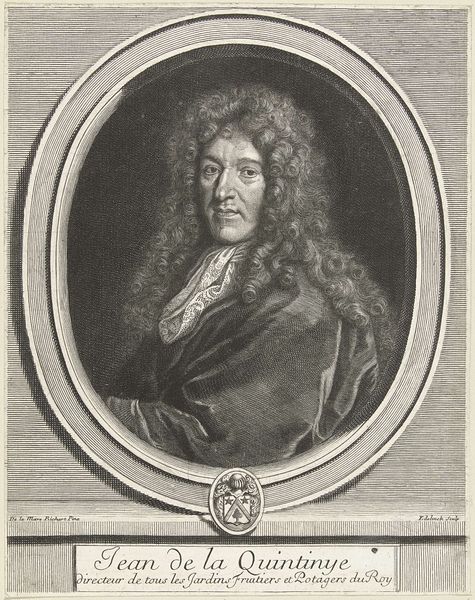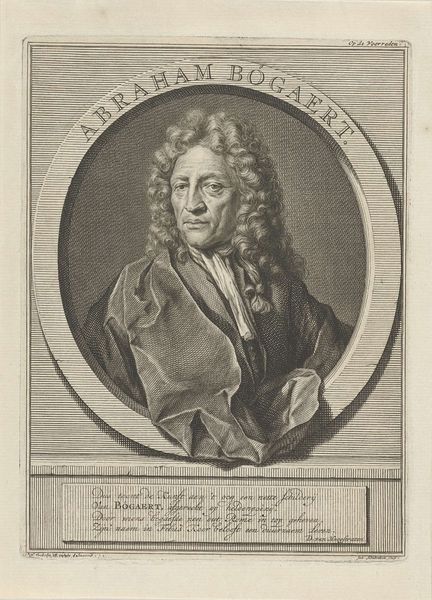
print, metal, engraving
#
portrait
#
baroque
# print
#
metal
#
old engraving style
#
historical photography
#
engraving
Dimensions: height 208 mm, width 151 mm
Copyright: Rijks Museum: Open Domain
Curator: This portrait has such a stark, direct gaze. Is this an image you're familiar with? Editor: Not intimately, but I recognize the period immediately. The elaborate wig, the drapery… there's a formality that speaks of wealth and status. Tell me more. Curator: This engraving, currently residing here at the Rijksmuseum, is titled "Portret van Christophorus Cellarius," made sometime between 1679 and 1717, depicting a portrait of Christophorus Cellarius by Abraham de Blois. The metalwork used to create these kinds of prints fascinates me. The level of skill required to transfer an image like this onto a metal plate, capable of reproducing countless copies… Editor: Exactly. The material conditions surrounding the production of portraiture in this period were inherently tied to class and privilege. To commission such a print meant having the resources to participate in the reproduction of power. Cellarius, as the portrait states, was born in Smalcald... Who was he and what was his impact on his world? Curator: Cellarius was a professor and a well-known historical geographer and, what strikes me here is the precision in the engraving. It captures such fine detail of his features, and his very large curly wig, almost giving the impression of a photograph centuries before its invention. You can see the subtle lines etched to create shading, giving it depth and volume. Editor: It also suggests a conscious effort to portray him as an intellectual authority. Note how his gaze penetrates, unwavering, seemingly dissecting the viewer. The very act of producing multiple copies of his likeness allowed for the propagation of his image and influence on knowledge. And consider how the act of engraving itself required not only artisanal skill, but access to workshops and materials. Curator: It does raise questions about the consumption of these images. Were they widely distributed? How accessible were they to the common person? Editor: I imagine distribution would have been limited, mostly enjoyed within intellectual and scholarly circles. Perhaps it served to reinforce existing hierarchies of knowledge and power, subtly reminding viewers of Cellarius' status. Curator: Looking closely reminds me of how much the processes behind its production shaped its purpose and function. Editor: For me, the power dynamics at play during the late 17th century become clearer by examining prints like this.
Comments
No comments
Be the first to comment and join the conversation on the ultimate creative platform.
